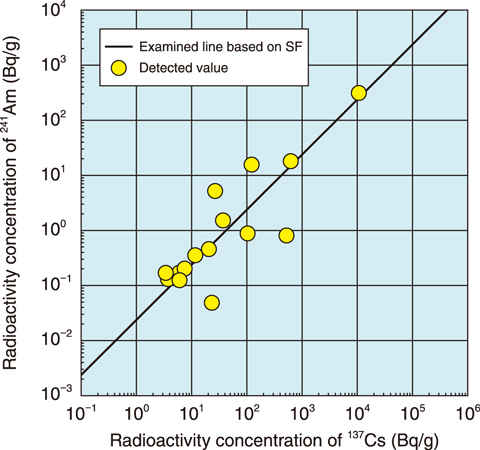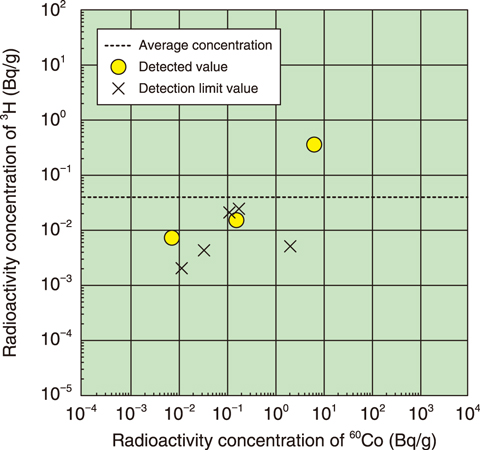
Fig.8-4 Relationship between the radioactivity concentrations of 137Cs and 241Am

Fig.8-5 Relationship between the radioactivity concentrations of 3H and 60Co
Low-level radioactive wastes generated from nuclear research facilities at JAEA are planned to be disposed of in a near-surface disposal facility. Thus, a method for evaluating the radioactivity concentration contained in waste before starting disposal must be developed. However, directly determining the concentration of difficult-to-measure nuclides (DMNs), such as nuclides emitting alpha particles or beta rays, is impossible from outside the waste containers. Thus, to rapidly evaluate the concentration of DMNs, the scaling factor (SF) method or the average radioactivity concentration method was applied to the gamma-emitting nuclide (reference nuclides: cobalt-60 (60Co), cesium-137 (137Cs), etc.,). Which method to apply consider for DMN concentration the generation mechanisms and transfer behavior of the radionuclide.
The applicability of the SF method to metal wastes from JPDR, JRR-2, and JRR-3 has been studied. In this work, the proposed method was applied to the waste from a hot laboratory (Hot Lab), a post-irradiation examination facility, focusing on 25 nuclides that are important for the evaluation of the exposure dose in near-surface disposal.
As radionuclides are in the radioactive wastes, fission products (FP), actinide elements generated from uranium, and corrosion products, produced by neutron activation on the structural materials or their corrosives during the reactor operation, are also present. In the wastes from the Hot Lab, all of these radionuclides are contained because various samples, some of which were prepared by neutron irradiation in a reactor, have been treated.
An example of the relationship between radioactivity concentrations of two waste products is shown in Fig.8-4. Here, a clear relationship is found between the concentrations of 137Cs (FP) and americium-241 (241Am) (actinide element), thus demonstrating that the concentration of 241Am can be evaluated using the SF method.
However, from the relationship between hydrogen-3 (3H: tritium) and 60Co, shown in Fig.8-5, such volatile nuclides present different transfer behaviors than 60Co and 137Cs and can have very small correlations with the reference nuclides. Therefore, if a nuclide does not correlate with the reference nuclide or the amount is too small to detect significant radiation signals, the average radioactivity concentration method is applied. Using this method, the concentration ratio of 3H and 60Co have a margin of 1000 times or more that of the radioactivity concentration of radionuclide corresponding to dose criterion in a near-surface disposal facility.
Based on this work, the radioactivity concentration of 25 nuclides contained in the Hot Lab waste can be evaluated using the SF and the average radioactivity concentration methods. Future efforts will focus on extending this work to develop an evaluation method for waste from a variety of facilities.
(Akina Mitsukai)